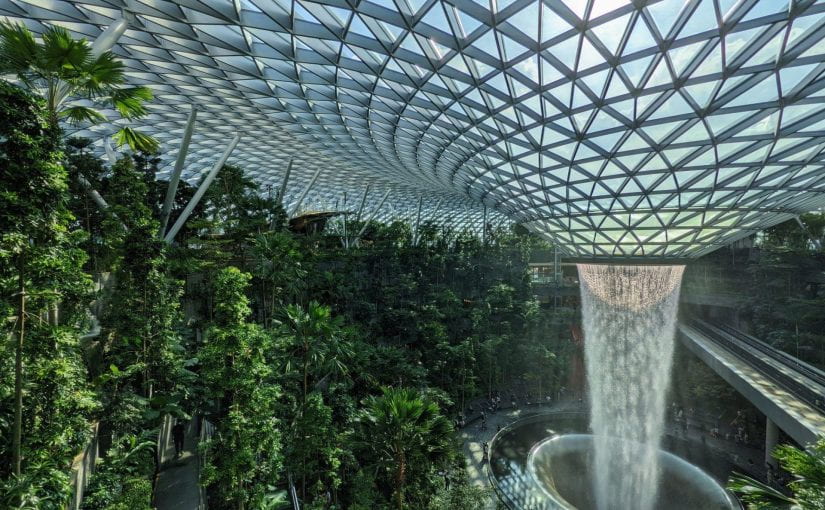Written by Kahli Merriman
During the summer of 2022, I had the pleasure of traveling to Singapore in June to research buildings that had green facades, green roofs, and dense gardens intertwined with architecture for an independent research project that I titled Garden Architecture. During my two week stay in this innovative city/state/country, I wanted to investigate the ways architecture can bring humans closer to nature, especially in dense urban settings that lack access to greenery, as part of a more qualitative and experiential approach to sustainable design.

The Singaporean people, food, and culture was all incredibly fascinating and friendly, but even better was the breathtaking greenery that exists in every nook of the city and even more inspiring was Singapore’s relationship to nature and their constant aspiration to connect even more people and buildings with it. My trip resulted in me visiting over 30 buildings that fell into the category of Garden Architecture, however really I visited a countless number of buildings that included greenery into their design because Singapore truly is the Garden City. It is a communal environment in which every building contributes a little bit, making the city greener and greener over time. Out of all these buildings, I chose to include 20 in my final research because I felt that they represented the best examples of Garden Architecture in Singapore.

The 20 chosen buildings ranged from schools to offices to shopping centers, hotels, and condo buildings, showing just how universal the typology of Garden Architecture is. By studying these buildings, I was able to understand how Singapore came to design so much Garden Architecture, why it is a successful architectural model, some of the techniques needed to populate architecture with greenery, what it takes to sustain and maintain gardens in a building, and if this model is possible in other climates and locations.



I was also able to stay in two hotels that fell into the Garden Architecture category, both the Oasia Hotel Downtown and the Parkroyal Pickering. This was a phenomenal experience not just because of their great service, pleasant amenities, or perfect locations but also because of their architectural design which brings both the city and the hotel guests closer to nature in a dense and modern urban environment. It was wonderful to actually stay in them as a guest, because I was able to fully experience and understand their garden designs due to my prolonged interaction with them. Both buildings are incredibly well known sustainable design icons across the world and I feel so grateful that I was able to call them home for a short period of time.

Not only does my academic work aim to populate greenery in urban landscapes and connect users to the natural world around them, it also argues that sustainable design goes beyond just building efficiency. That’s why I’ve always loved Singaporean architecture because so much of it is literally alive and they do not just rely on a set of calculations to label their buildings as sustainable. They have so many buildings that are lush and green and part of why they are so fascinating to me is because they seem to break so many of the constructs of architecture. Garden Architecture is often covered in chaotic leaves, branches, and vines that have no mind for architecture, this in turn redefines the role of the facade, creates a whole new experience both for pedestrians and building occupants, and even does a good job at making a building “efficient” as well.



This Garden Architecture typology is imperative to creating healthy, desirable, and long-lasting cities and it is also a big part of my identity as an architectural designer, therefore I thank both the USC School of Architecture and the William and Neoma Timme Traveling Fellowship for supporting me on this unforgettable research journey.

